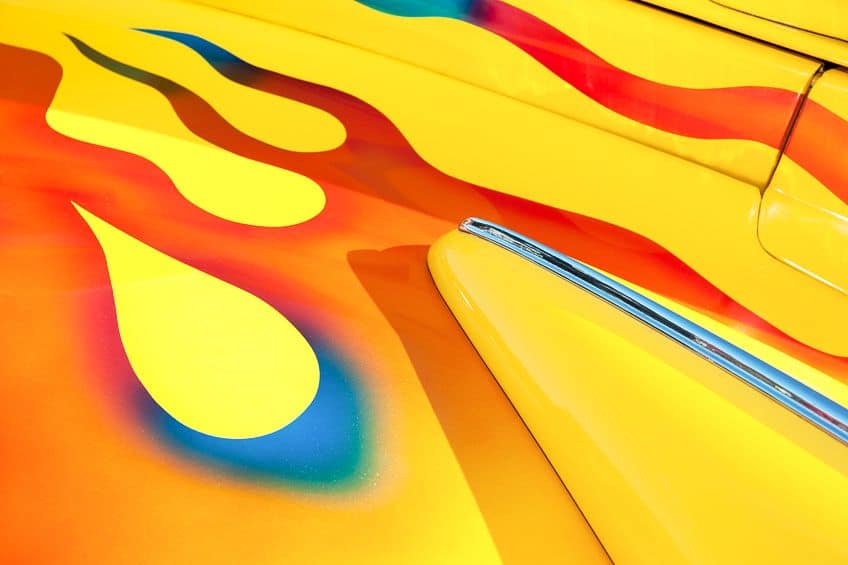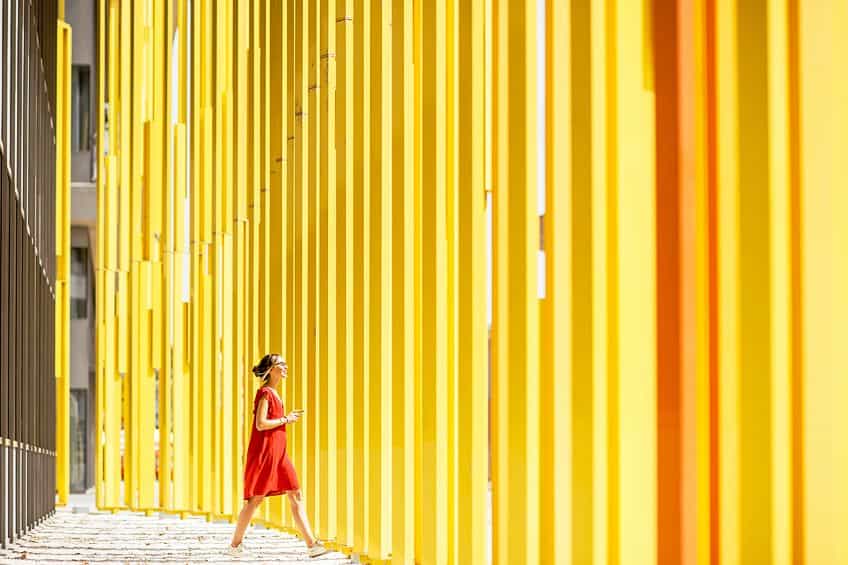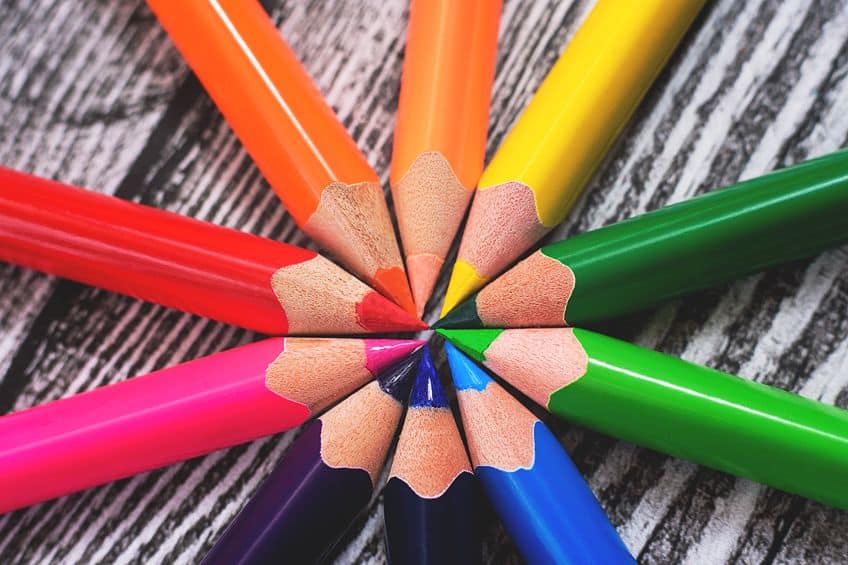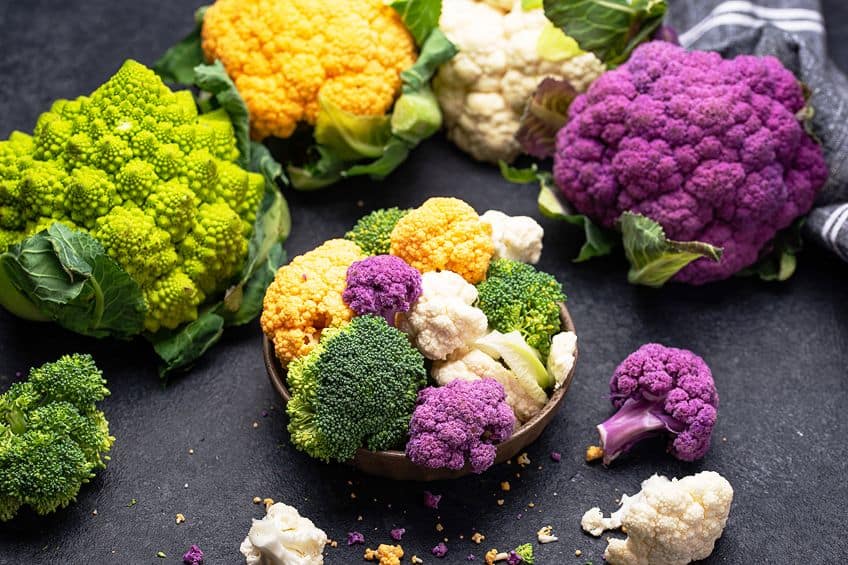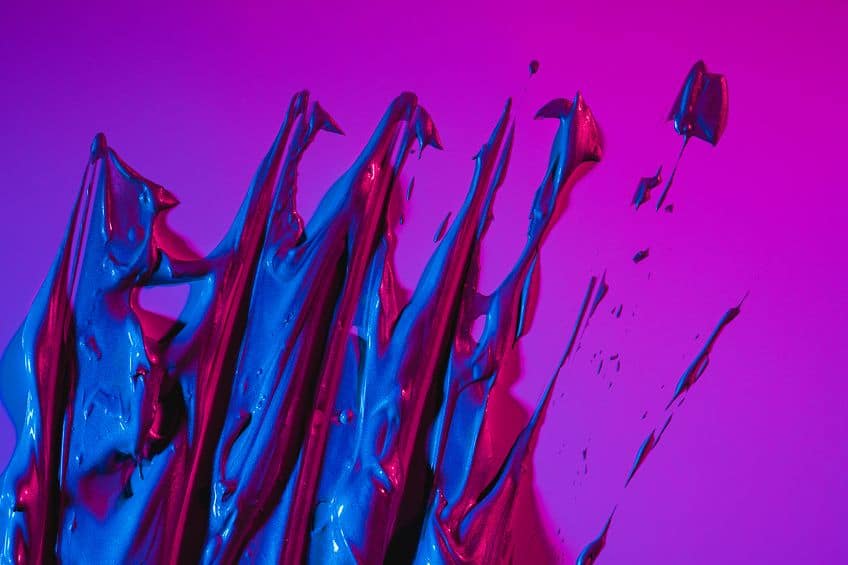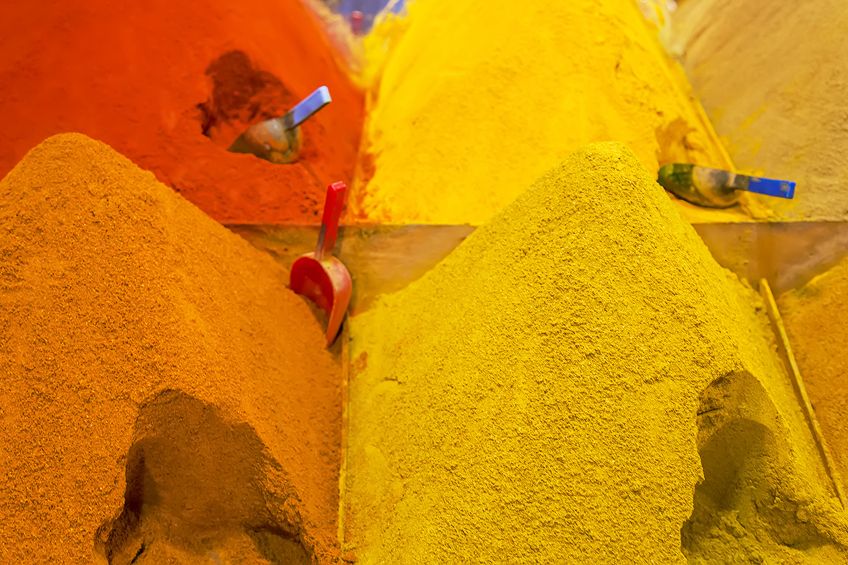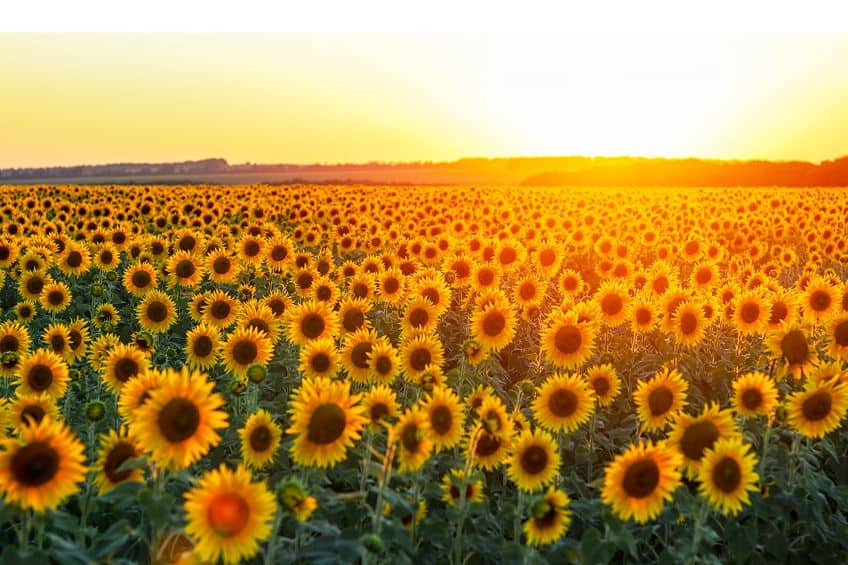What Colors Make Yellow? – How To Make Yellow Shades
Ahh, yellow – the color of sunshine, optimism, and joy. It is no wonder that this hue is a popular choice for artists and designers alike. But what happens when you want to create a unique shade of yellow that does not come from a tube? Fear not, for the art of color mixing is here to save the day! Whether you are a novice or an experienced artist, learning about what two colors make yellow, as well as how to make yellow paint in a variety of shades, can help elevate your work to new heights. So, let us grab our palette knives and explore the world of yellow with all its nuances and subtleties!
Contents
A Look at the Color Yellow
The color yellow is a radiant and versatile hue that has the power to evoke a wide range of emotions and associations. From the bright, sun-drenched hues of lemon and gold to the soft, buttery shades of cream and vanilla, yellow is a color that offers a wealth of visual possibilities.
| Yellow Color | Hex Code | RGB | CMYK (%) | Shade of Yellow |
| Yellow | #ffff00 | 255, 255, 0 | 0, 0, 100, 0 | |
| Cream | #fffdd0 | 255, 253, 208 | 0, 1, 18, 0 | |
| Lemon | #fafa33 | 250, 250, 51 | 0, 0, 80, 2 | |
| Gold | #ffd700 | 255, 215, 0 | 0, 16, 100, 0 | |
| Vanilla | #f3e5ab | 243, 229, 171 | 0, 6, 30, 5 | |
| Custard | #ffff76 | 255, 255, 118 | 0, 0, 54, 0 | |
| Butter | #f6e2b9 | 246, 226, 185 | 0, 8, 25, 4 | |
| Mustard | #ffdb58 | 255, 219, 88 | 0, 14, 65, 0 | |
| Yellow Ochre | #cc7722 | 204, 119, 34 | 0, 42, 83, 20 | |
| Unmellow Yellow | #ffff66 | 255, 255, 102 | 0, 0, 60, 0 |
At its brightest, yellow is an electrifying color that demands attention and exudes energy. This vibrant shade can be seen in everything from the dazzling rays of the sun to the bold and graphic designs of optimism and positivity, conveying a sense of confidence and self-assurance. In its softer tones, yellow takes on a more delicate and gentle quality.
The creamy yellows of custard and butter can create a sense of comfort and warmth, while the subdued tones of mustard and ochre add a touch of earthy sophistication to any palette.
These more muted shades of yellow can be used to evoke feelings of nostalgia, stability, and tradition. When used practically by artists and designers, it can become easy to understand just why yellow has been so celebrated throughout history, for its ability to convey a range of moods and emotions in varying contexts and situations. Whether it is the sunny warmth of a summer day, or the cozy glow of a candlelit room, yellow has a unique power to capture our attention and captivate our imagination.
The History of Yellow
Before we dive into what colors make yellow paint, we first need to explore the rich history that comes with yellow. Doing so will not only give us a more complete context behind this vibrant hue, but may also positively alter the way in which we approach this shade within our own works. As a color that has illuminated human history for thousands of years, yellow has been able to garner a rich and varied tale that spans continents, cultures, and centuries. From the earliest civilizations that prized its vibrant hue to the modern era, where it is still an enduring presence in art, fashion, and design, yellow has been a source of inspiration and fascination for humanity.
The story of yellow begins in ancient Egypt, where the color was first associated with the sun, gold, and divinity.
The Egyptians used yellow ochre, a pigment derived from clay, to paint the walls of their tombs and temples, believing that it would ensure the deceased’s eternal life. The use of yellow in Egyptian art was also symbolic of the life-giving power of the Sun, which was revered as a deity. In ancient Greece, however, yellow was closely associated with intellect and wisdom. The Philosopher, Pythagoras believed that yellow was the color of the soul, while the poet Homer described honey as yellow-haired, symbolizing its sweetness and purity. The Greeks also used yellow in their art, such as the golden drapery that adorned the statues that depicted their gods and goddesses.
Moving into the Middle Ages, yellow became associated with wealth and power. The precious metal gold, which has a yellow hue, was highly prized, and was used to adorn the robes of kings and queens. In medieval art, yellow was often used as a background color to highlight the figures of saints and other important figures. The Renaissance saw a renewed interest in the arts and sciences, and yellow was no exception. The Italian artist, Sandro Botticelli, used yellow in many of his paintings, such as “The Birth of Venus”, where the goddess is depicted emerging from a yellow shell. The Dutch artist, Johannes Vermeer, also used yellow in his paintings, such as “The girl with a Pearl Earring”, where the girl’s turban is a vibrant shade of yellow.
Later, in the 19th century, the Impressionists of the time revolutionized the use of color in art, and yellow played a prominent role in their works.
Artists such as Vincent van Gogh, Paul Cézanne, and Claude Monet experimented with different shades of yellow to capture the luminosity of sunlight. Van Gogh, in particular, was drawn to the vibrancy of yellow, using it extensively in paintings such as “Sunflowers” and “Starry Night”. Leading into the 20th century, yellow would become a symbol of modernity and innovation. The use of yellow in advertising, such as the yellow arches of McDonald’s, became ubiquitous, while the iconic yellow taxis of New York City became a symbol of the city’s fast-paced lifestyle. In the world of fashion, yellow was used in designs by famous designers such as Yves Saint Laurent and Marc Jacobs.
As you may tell, yellow’s rich history makes up a tapestry of human creativity, culture, and symbolism. From its associations with divinity and wisdom in ancient times, to its role in modern art and design, yellow has been an enduring presence throughout history. While it has been associated with both positive and negative connotations, its luminosity and warmth continue to inspire and captivate us to this day.
The Color Wheel and Its Relationship With Yellow
While we may now have a much clearer understanding of this optimistic hue, we should take the time to understand how this color can be used alongside other colors before we learn about what colors make yellow and how to make yellow paint for ourselves. But first, what is the relationship between yellow and the color wheel, the visual tool that illustrates the relationship between colors?
To answer this question, we must delve into the world of color theory and explore the position of yellow in the color wheel, the hues that complement it, and the ways in which it interacts with other colors to create striking visual harmonies.
Yellow Complementary Color
As we journey through the realm of color theory, we come across a fascinating phenomenon, the complementary relationship between yellow and purple. Found on the opposite side of the color wheel, purple, with its regal and opulent qualities, is the perfect counterpart to the exuberance and energy of yellow. When placed side by side, these two hues create a visual tension that is both captivating and harmonious. They balance each other out, with the warmth of yellow being elevated by the royalty of purple, and vice versa.
Yellow, with its radiant and joyful energy, represents the warmth and brightness of the sun, the promise of new beginnings, and the vibrancy of life. In contrast, purple exudes a regal and mystical aura, evoking the depths of the cosmos, the richness of royalty, and the mystery of the unknown.
When these two colors meet, they create a powerful tension that draws the eye and captures the imagination. Their complementary nature creates a balance of warm and cool tones, of light and shadow, of earthly and divine energies. It is a dynamic interplay that can evoke a range of emotions and moods, from joy and vitality to introspection and contemplation.
| Color Name | Hex Code | RGB | CMYK Color Code (%) | Shade |
| Yellow | #ffff00 | 255, 255, 0 | 0, 0, 100, 0 | |
| Purple | #800080 | 128, 0, 128 | 0, 100, 0, 50 |
Yellow Split Complementary Colors
Yellow’s split complementary colors, dodger blue and vivid purple, undoubtedly make a captivating and dynamic pairing. As split complements, these hues sit adjacent to yellow’s complement, blue, on the color wheel, creating a bold and striking color scheme that is both visually pleasing and emotionally engaging.
Dodger blue, a bright and cheerful shade of blue, is the perfect complement to yellow, creating a sense of balance and harmony. Vivid purple, on the other hand, is a bold and dramatic hue that creates a sense of depth and richness in the color scheme.
Its complementary relationship to yellow creates a dynamic tension that is both captivating and energizing. Together, dodger blue and vivid purple create a dynamic and harmonious color scheme that is sure to captivate the eye and engage the emotions. Whether used in art, design, or fashion, this split complementary combination offers endless possibilities for creativity and self-expression, reminding us of the power and beauty of color in our lives.
| Color Name | Hex Code | RGB | CMYK Color Code (%) | Shade |
| Yellow | #ffff00 | 255, 255, 0 | 0, 0, 100, 0 | |
| Dodger Blue | #0080ff | 0, 128, 255 | 100, 50, 0, 0 | |
| Vivid Purple | #8000ff | 128, 0, 255 | 50, 100, 0, 0, |
Yellow Triadic Colors
Cyan and magenta – what a stunning and powerful combination they make! As triadic colors, these hues are evenly spaced around the color wheel, creating a dynamic and balanced color scheme that remains engaging throughout. Cyan, a cool and refreshing shade of blue-green, is the perfect complement to yellow, creating a sense of balance and harmony.
When paired with yellow, it brings a feeling of freshness and tranquility, reminiscent of the ocean waves and cool breezes.
Magenta, however, is a bold and passionate hue that creates a sense of drama and intensity in the color scheme. Its triadic relationship to yellow creates a dynamic contrast that is both captivating and energizing. Together, cyan and magenta create a dynamic yet balanced color scheme that is sure to captivate the eye and evoke a range of emotions.
| Color Name | Hex Code | RGB | CMYK Color Code (%) | Shade |
| Yellow | #ffff00 | 255, 255, 0 | 0, 0, 100, 0 | |
| Cyan | #00ffff | 0, 255, 255 | 100, 0, 0, 0 | |
| Magenta | #ff00ff | 255, 0, 255 | 0, 100, 0, 0 |
Yellow Monochromatic Colors
It should come as no surprise that the monochromatic colors of yellow are able to provide a stunning display of variation and depth. Monochromatic color schemes are created by using variations of a single hue, in this case, yellow. This allows for a rich exploration of the various tones, tints, and shades of the color, creating a harmonious and sophisticated color scheme that is both elegant and versatile.
From the soft and delicate pastel yellows to the bold and vibrant golden yellows, a monochromatic color scheme can evoke a wide range of emotions and moods.
The various tones, tints, and shades of yellow can create a sense of warmth and coziness, reminiscent of the sun’s radiant glow, or a feeling of calmness and tranquility, reminiscent of a peaceful sunset. Monochromatic color schemes are often used in art and design to create a sense of unity and cohesiveness. When used effectively, this color scheme can create a striking and sophisticated visual impact that is both powerful and memorable.
| Yellow Color | Hex Code | RGB | CMYK Color Code (%) | Shade of Yellow |
| Strong Yellow | #b3b300 | 179, 179, 0 | 0, 0, 100, 30 | |
| La Rioja | #cccc00 | 204, 204, 0 | 0, 0, 100, 20 | |
| Chartreuse Yellow | #e6e600 | 230, 230, 0 | 0, 0, 100, 10 | |
| Yellow | #ffff00 | 255, 255, 0 | 0, 0, 100, 0 | |
| Vivid Yellow | #ffff1a | 255, 255, 26 | 0, 0, 90, 0 | |
| Electric Yellow | #ffff33 | 255, 255, 51 | 0, 0, 80, 0 | |
| Paris Daisy | #ffff4d | 255, 255, 77 | 0, 0, 70, 0 |
How to Make Yellow Paint
Making your own paint can be a fun and rewarding experience, and creating your own yellow paint is no exception! Here is a step-by-step guide on what colors make yellow and how to make yellow paint. You will first need to gather your materials, however, which will include the following:
- A pigment/coloring agent: This can be any yellow pigment or coloring agent such as turmeric, saffron, or yellow ochre.
- A binder: This can be a substance that will bind the pigment together, such as egg yolk, honey, or gum arabic.
- A mixing palette: This can be any smooth surface, such as a piece of glass or ceramic plate, that you can then use to mix your paint.
- A mixing tool: This can be a paintbrush, palette knife, or any other tool that you prefer to use to mix your paint.
| Color Name | Hex Code | RGB | CMYK Color Code (%) | Shade |
| Turmeric | #ccb647 | 204, 182, 71 | 0, 11, 65, 20 | |
| Saffron | #f4c430 | 244, 196, 48 | 0, 20, 80, 4 | |
| Yellow Ochre | #cc7722 | 204, 119, 34 | 0, 42, 83, 20 |
If you are using a natural pigment such as turmeric or saffron, you will need to grind it into a fine powder using a mortar and pestle, or a coffee grinder. If you are using a synthetic pigment, it may already be in a powder form. In order to prepare your binder, if you are using egg yolk as your binder, you will need to separate the egg yolk from the egg white and place it in a small container. Beat the egg yolk until it is smooth and creamy. If you are using honey or gum arabic, however, mix it with a small amount of water to create a smooth paste.
You will then need to mix your paint by placing a small amount of your now-prepared pigment onto your mixing palette.
Add a small amount of your prepared binder and mix the two together using your mixing tool. Continue adding small amounts of pigment and binder, mixing until you have reached your desired consistency and color. Once you have mixed your paint, test it on a piece of paper to see if it is the color and consistency that you desire. Adjust the pigment or binder as needed until you achieve your desired results. And there you have it, you have now created your very own yellow paint! With a little bit of creativity and experimentation, you can use this paint to create a wide range of beautiful and unique artworks.
A Simpler Way to Create Yellow Paint
However, if you are looking to figure out what two colors make yellow, as well as how to make yellow paint darker, then we have provided a much simpler explanation as to how to make yellow paint. The materials you will need to make your own yellow paint include the following:
- Two colors of paint: Choose two colors that, when mixed together, will create yellow. For example, you could use red and green, as well as white and black to lighten or darken as necessary.
- A mixing palette: This can be any smooth surface, such as a piece of glass or ceramic plate, that you can use to mix your paint.
- A mixing tool: This can be a paintbrush, palette knife, or any other tool that you prefer to use to mix your paint.
| Color Name | Hex Code | RGB | CMYK Color Code (%) | Shade |
| Red | #ff0000 | 255, 0, 0 | 0, 100, 100, 0 | |
| Green | #008000 | 0, 128, 0 | 100, 0, 100, 0 | |
| White | #ffffff | 255, 255, 255 | 0, 0, 0, 0 | |
| Black | #000000 | 0, 0, 0 | 0, 0, 0, 100 |
To start this process, place a small amount of one of your base colors onto your mixing palette. In this example, we will be using red, which we will then combine with the same amount of green, using our mixing tool. Continue adding small amounts of each color and mixing until you have reached a hue that is close to yellow.
Once you have mixed your two colors together, you may find that the resulting hue is not quite yellow.
If this is the case, you can adjust your paint by adding more of one color or the other until you achieve your desired shade. Soon after you have attained your preferred shade of yellow, feel free to test it on a piece of paper to make sure that it has the exact hue and consistency that you are looking for. Once completed, you will then have your own shade of yellow! However, if you are still unsure as to how to make yellow paint darker or lighter, then you simply need to add tiny amounts of either black or white paint respectively. But be careful, as adding in too much can muddy your mixture to the point of no return. So, work with a light touch and embrace subtlety when needed.
To end things off, the question of what colors make yellow is one that has intrigued artists, designers, and color enthusiasts for centuries. By understanding the color wheel and the principles of color mixing, we can see that yellow can be created through a variety of combinations with other colors, including primary colors such as red and green, complementary colors such as purple, and secondary colors such as orange and green. Whether you are mixing colors to create a work of art, decorating your home, or simply exploring the fascinating world of color, understanding the colors that make up yellow can open up a whole new world of possibilities and creative opportunities.
Frequently Asked Questions
What Does the Color Yellow Symbolize?
Yellow is often associated with joy, happiness, sunshine, and warmth. It can also symbolize caution, such as with yellow traffic signals, and even cowardice and treachery in some cultures.
What Are Some Common Color Combinations With Yellow?
Yellow can be combined with a variety of colors to create different effects. Some common combinations include yellow and purple (complementary colors), yellow and green (analogous colors), and yellow and red (warm colors).
Megan is a writer and researcher who holds a degree in Social Sciences, with a specialization in Psychology and Environmental Science, from the University of Cape Town. Her dedication to acquiring knowledge and making a positive impact has driven her current work in promoting conscious and sustainable growth in Southern Africa. Megan’s interests encompass exploring the physical and psychological impacts of color in our environment on our mood and well-being. She is also passionate about the role of art and creativity, which has been an integral part of society since the beginning of human history. Since 2022, Megan has been contributing blog posts on painting and color theory at artfilemagazine.
Learn more about Megan van Schoor and about us.
Cite this Article
Megan, van Schoor, “What Colors Make Yellow? – How To Make Yellow Shades.” artfilemagazine – Your Online Art Source. April 19, 2023. URL: https://artfilemagazine.com/what-colors-make-yellow/
van Schoor, M. (2023, 19 April). What Colors Make Yellow? – How To Make Yellow Shades. artfilemagazine – Your Online Art Source. https://artfilemagazine.com/what-colors-make-yellow/
van Schoor, Megan. “What Colors Make Yellow? – How To Make Yellow Shades.” artfilemagazine – Your Online Art Source, April 19, 2023. https://artfilemagazine.com/what-colors-make-yellow/.


